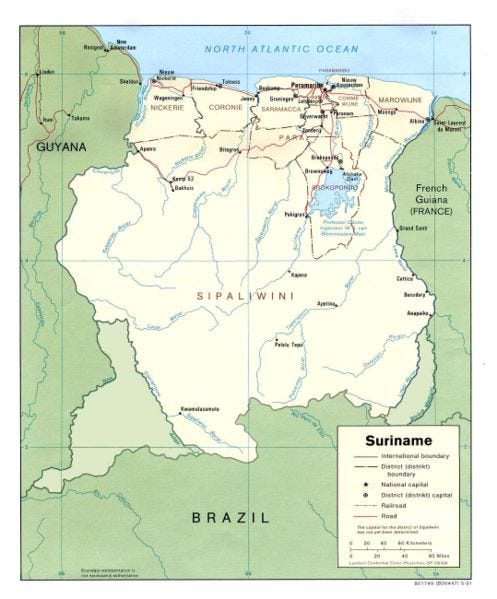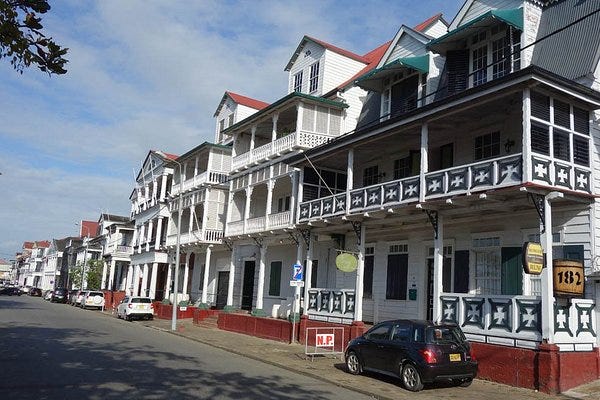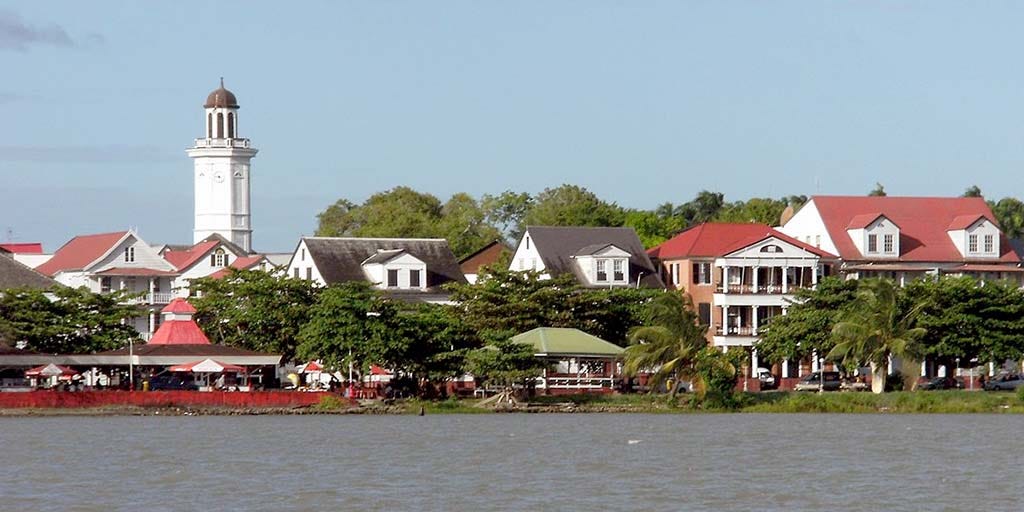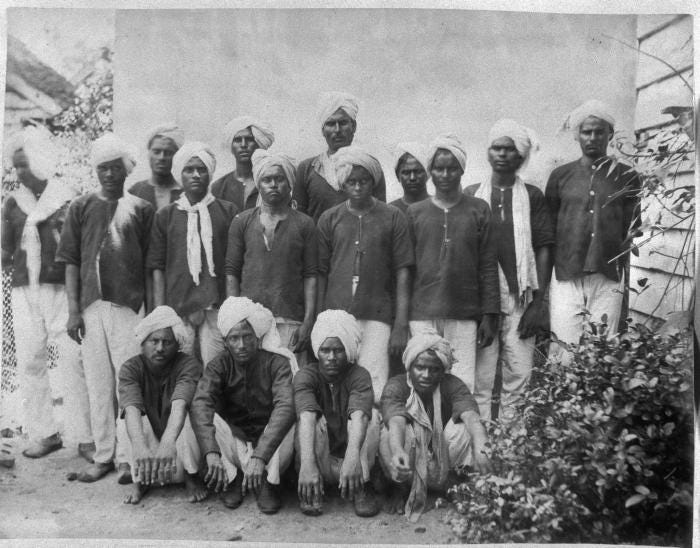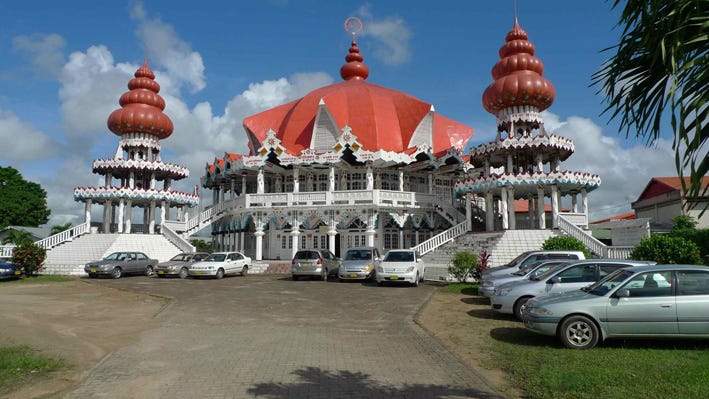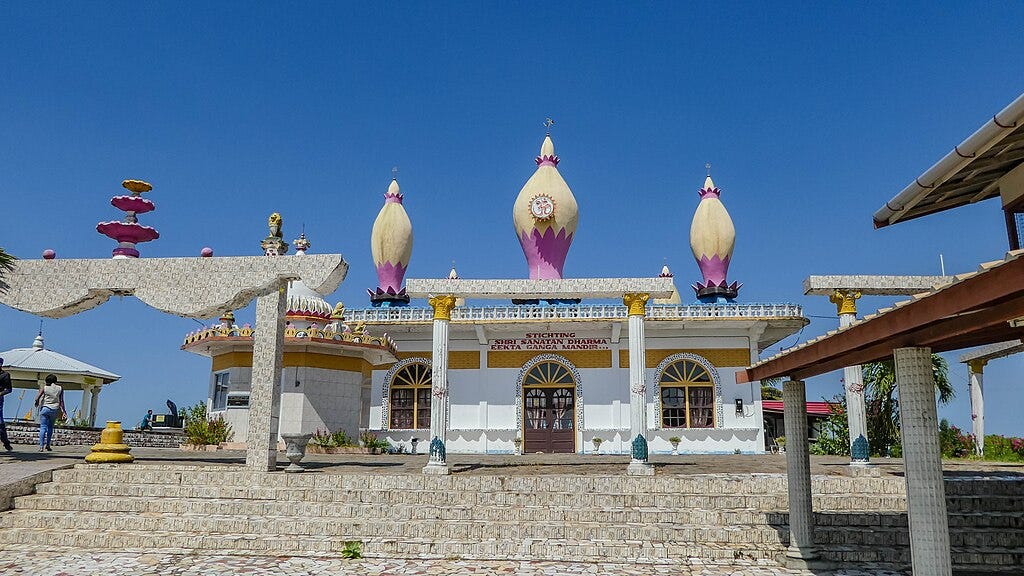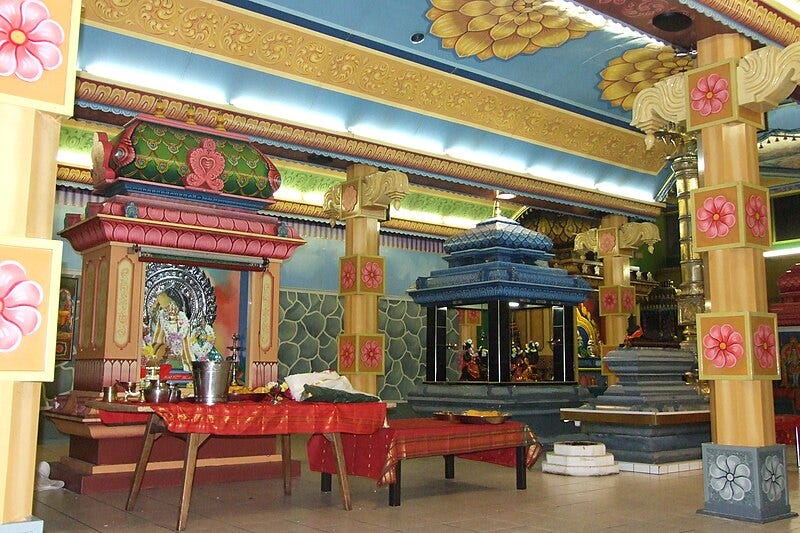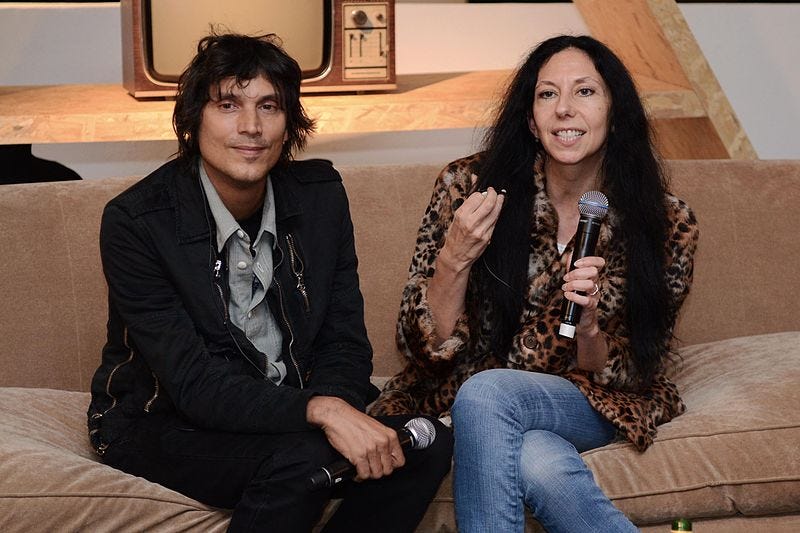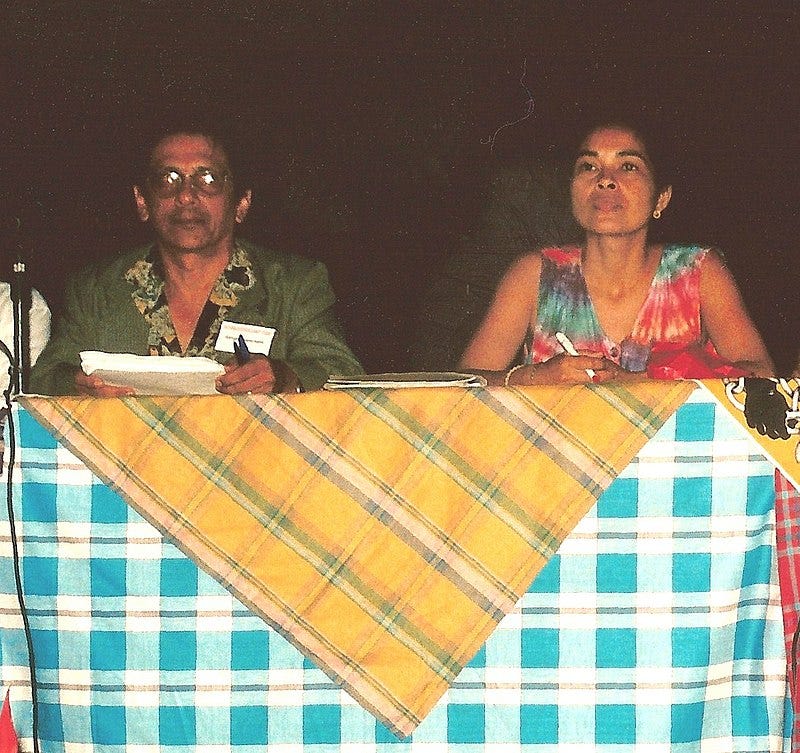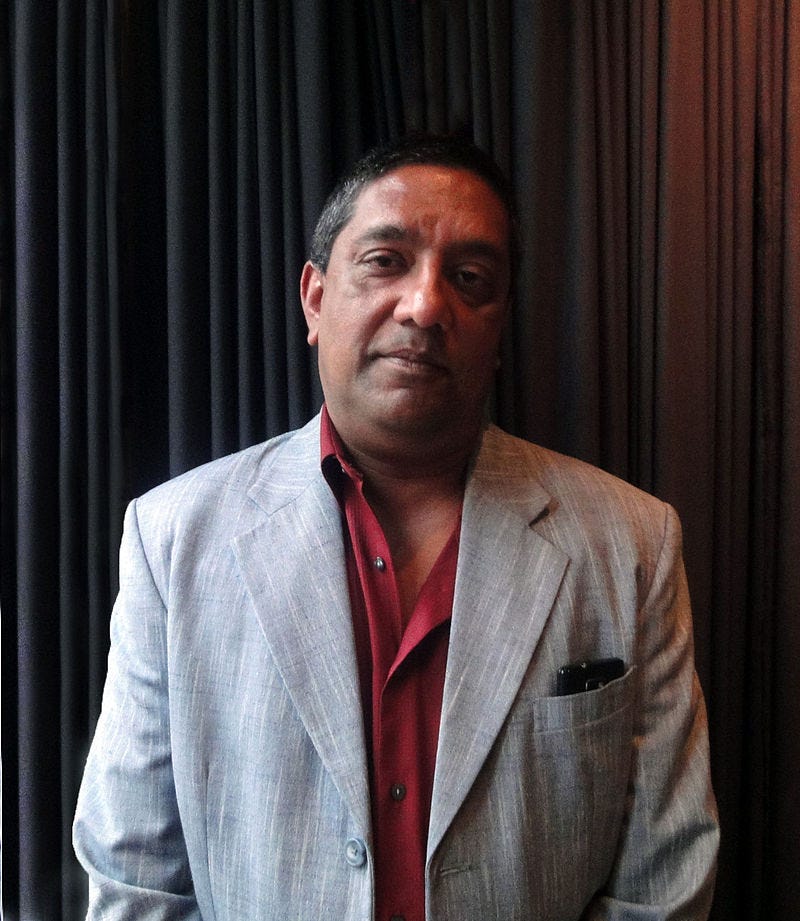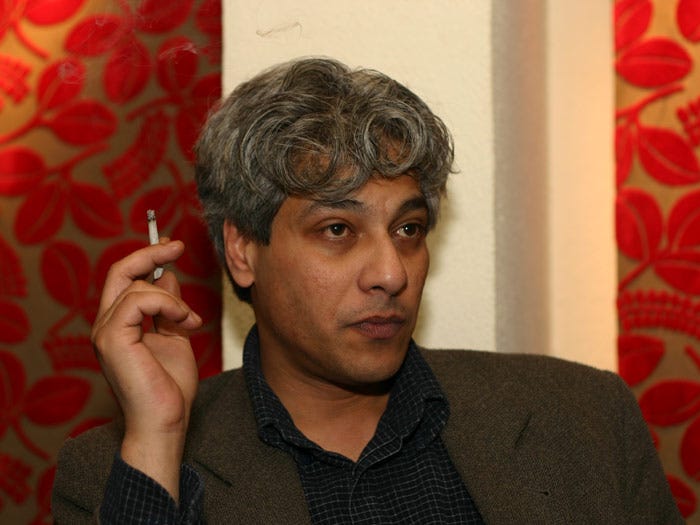Suriname is a small country located in the Northern part of S.America, also considered part of the Carribean, and facing the Atlantic. Located slightly north of the equator half of it’s territory is covered by thick rain forests.
It’s capital city, is Paramaribo, and the country was inhabited by indigenous natives, which included the Arawaks, Caribs and Wayana. The Dutch colonized the country in late 17th century, setting up large sugarcane plantations, often driven by African slave labour. The country became independent in 1975, but has the Dutch influence, being one of the few countries outside Europe, where Dutch is the official language. The economy is heavily dependent on mineral resources like bauxite, gold, petroleum products.
After the abolition of slavery, the Dutch Govt signed a treaty with the British during 1870-71 over the recruitment of contract workers. And that is when Indians began to be bought over as indentured labor, mostly from Uttar Pradesh, Bihar, Haryana, Punjab and Tamil Nadu. Incidentally Indians were bought over on the false pretext of visiting “Holy land of Shri Ram” for pilgrimage.
The first ship carrying around 400 Indian immigrants the Lalla Rookh arrived in Paramaribo on June 5, 1873 after starting from Kolkata in February. Around 11 died on the voyage mainly due to the terrible travel conditions. However more such voyages took place and around 64 ships followed bringing around 34,000 Indians as labor till 1916.
The newly freed slaves who saw the immigrant workers at the port, are believed to have stated “Jobo Tanbasi”, meaning “White man is still the boss”.
The indentured system was basically slavery in another name, the conditions in which the Indian workers were transported, and later lived in was even worse, than what the slaves experienced. They were not paid what they were promised, often beaten up and the women were abused sexually by the plantation owners.
The British fearing that this would hurt their reputation began to enact several legislations, for safe transport and better working conditions. The Dutch Govt too followed the new legislations, as they did not want to be accused of reviving the slave trade.
The colonial British Govt mandated the presence of at least one doctor on every ship, and every ship to have drinking water, as well as a sick bay with nursing staff. Any shipping company that violated the regulations, would be prohibited from transporting contract workers.
Most of the Indian settlers in Surinam, were descended from the early workers bought here by the Dutch. The majority are Hindu(78%) followed by Muslims(13%) mostly Sunni, Christians and Jains. Hindus make up around 23% of the country’s total population, the second largest in South America after Guyana. Most of the Hindus are located in the coastal, urbanized districts of Saramacca, Nickerie, Wanica and Commewijne.
Again like in Guyana, Trinidad, most Hindus here belong to the Sanatani sect, a more traditional form of Hinduism, while the others claim affiliation to Arya Samaj. ISKCON also has a presence in this country, and is growing rapidly.
While majority of Hindus in Surinam are Hindus, there are other immigrant groups too who follow Hinduism in smaller numbers like Javanese, Chinese, Creole, Maroons( descendants of African slaves in Carribean).
Also unlike Indians in Trinidad & Tobago, Guyana who speak English, the Indians here speak Sarnami Hindustani, basically a mix of Bhojpuri, Awadhi, Magahi, as well as Dutch. Also the Dutch colonial rulers did not force them to abandon their native languages unlike the British in Trinidad & Tobago, Guyana. There are good number of temples in the country too.
However when Surinam became an independent country in 1975, many Indo-Surinamese migrated to Netherlands, concerned over their future. Of the 200,000 Hindus in Netherlands, majority are from Surinam in fact, this is a well known Murugan Temple there.
Though smaller in number compared to UK or US, Hindus in Netherlands are better organized, there are five Hindu schools here, where Hindi is also taught. They have their own human rights group Agni to address any issues of discrimination against Hindus here. Some of the Indo-Surinamese also play for the Netherlands football team
Aron Winter, who played for Ajax, Inter Milan, and was a member of the 1988 Dutch team that won the Euro tournament. He also played in the 1990 and 1994 World Cups, and became the first player of Indian descent ever to score in a World Cup, during the match with Brazil. He is currently the manager for the Suriname National team.
Another is Ricardo Krishna, who played for the Netherlands Under 16, Under 20 teams.
Luciano Narasing, represented Netherlands national team between 2012-16, scored against Belgium in the 2012 Euro tournament, played an important role in Netherland’s qualification for the 2014 World Cup.
Many Indo-Surinamese have done well in politics, like Ashwin Adhin, who was Vice President between 2015-20, the youngest one, belonging to the National Democratic Party.
Pretaap Radhakishun, who was the Prime Minister from 1986-87 and later Vice President from 1996-2000.
Ramsewak Sankar, the 4th President, served from 1988-90, before being overthrown in a coup.
Vinoodh Matadin a well known fashion photographer, who along with his partner Inez van Lamsweerde has done ad campaigns, and work featured in many fashion magazines.
Ismene Krishnadath, a well known Progressive Writer.
Prem Radhakishun, a well known lawyer, columnist, as well as radio and TV producer.
Anil Ramdas, whose autobiographical novel Badal, that examines the evolution of Indian immigrants in Netherlands, and clash with Western values. Often considered the Dutch VS Naipaul.
And the current President Chan Santhokhi, who earlier was a police comissioner, later Minister of Justice, his tenure was noted for a heavy crackdown on crime and drug trafficking.





